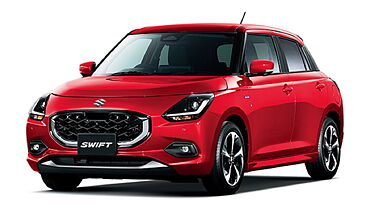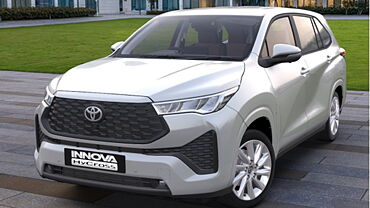At Cartrade, we have regularly published informative articles on cars and their engineering. Today, as part of a series of articles, Shiva Shankar takes a look at the petrol engine. How does it work, and how should it be maintained?
Please do ask your questions using the comment feature and we will be happy to answer them. Note that we have tried to maintain readability without going into extreme level of detail, so in some cases we may have generalized a bit. But, your questions can of course be as technical as you want!
Introduction
Engines are the heart of automobiles and they are indeed what make the automobile kick. While there are several types of engines, the most popular engine till date has been the petrol engines, which is described as relatively clean, easy to maintain, quiet and evolved to a good level of fuel efficiency. Though alternatives as CNG and LPG provide cleaner technology (read here for a comparison of different engine types), petrol engines remain cheaper and easier to maintain with less carrying costs attached to them.
Petrol engines have a wide variety of application in two-wheeler and four-wheeler automobiles aircrafts, motorboats and even small machines like lawn mowers, portable engine-generators or chainsaws.
Types of Petrol Engines
Petrol engines span various types and structures. The classification of petrol engines is dependent on various factors and they are typically classified based on:
- Number of piston strokes per cycle
- Cylinder arrangement
- Valve arrangement
- Cooling technology
- Air Supply
Let us understand commonly used terminology used for petrol engines:
Two Stroke Engines and Four Stroke Engines
The key segmentation in petrol engines depends on the number of strokes in their workings. Two stroke engines (click here to read more about the technical details of a two stroke engine) have two movements of the piston in a single thermodynamic cycle. Two stroke engines are known to provide high specific power but offer reduced fuel efficiency, more pollution and are noisier than the alternative. This makes them more popular in case of lightweight engines.
Four stroke engines, obviously with four strokes of the piston per thermodynamic cycle, are more popular in case of four wheelers and heavy automobiles, since efficiency and pollution matters more. Here, four strokes refer to the intake of air, compression of air, combustion (power), and exhaust. In the two strokes of a two stroke engine, all these components are combined.
Two stroke engines are commonly used where a small engine is to deliver significant power (relative to the vehicle’s weight), and where the compromise in terms of fuel efficiency and pollution is not significant. As the engine size increases, these compromises become harder to make and thus the four stroke engine becomes preferable.
The combustion chamber in case of engines plays an important role as it results in final fuel efficiency of the engine along with its power and emissions.
Cylinder Arrangement
In a petrol engine, the fuel explosions that power the vehicle, take place in the engine’s cylinders. Generally, the number of cylinders in engines, especially in the case of passenger car segment, ranges from 3 to 8. These cylinders can then be arranged in a specific way, which impacts the engines performance.
In general, the need for performance necessitates a larger combustion volume. But having a increasing the volume of a single cylinder will pose issues in terms of cooling, efficiency, and performance (the efficiency losses become larger as the cylinder size grows.) Thus, the need exists to have multiple cylinders.
In two wheelers, we find single and double cylinder engines. These double cylinders are usually arranged in a V shape pattern.
Three-cylinder engines have all three-cylinders arranged in a straight line, either vertically or slanted. This is also called as inline engine, where the pistons have common crankshaft, i.e. the transfer to the mechanical energy of the car.
Four cylinder engines are common amongst compact cars as well as sports cars. These cars are usually light weight cars and here too, the cylinders are placed in a single line.
6-cylinder and 8-cylidner engines are usually complex V-shaped engines where there are two banks of cylinders and pistons, which are aligned in two-different planes on the crankshaft. In passenger cars, V-8 layouts have generally been adopted for all piston displacements greater than 250 cubic inches (4 litres).
Most of the engines have even numbers of cylinders like 4, 6, 8 or 12. As an example, the Honda Accord has a V6 engine while Honda City comes with four-cylinder i-VTEC engine with 4-valves.
The number of cylinders in an engine impacts the vehicle’s total cylinder volume and thus its performance and mileage.
Air Supply
Car companies often described their engines as “ turbocharged engines.” This refers to an engine which delivers superior power, without changing the engine configuration itself. In order to increase the power, car engines are then referred to as super-charged or turbocharged. This is done by increasing the amount of air available in the engine for combustion. (As you will remember, combustion happens because of combination of oxygen and fuel, with a spark to ignite.)
In turbo engines, pumps force extra air in the cylinders, thus increasing the effect of combustion, thus increasing the power of the engine.
The power of the engine is limited by the amount of air reaching the cylinders. In order to burn one unit of petrol air needed is 15 times as much as the quantum of petrol. Thus, the more the air reaching the engines, the more is the power output.
Maruti Swift, Hyundai Sonata, Chevrolet Cruze in India are some of the classic examples of cars in India that have turbo-charged engines. Most of the car makers have turbo-charged engines for their models to lend them extra power.
Valve Arrangement
Did you hear the about VVT engine from Toyota or BMW? It refers to the Variable Valve Timing. It was originally developed by Toyota and allows variable combinations of lift, duration or timing of intake or exhaust valves while the engine is operating. This means when the engine is operational, valve timings will keep on adjusting itself as optimally for the vehicle’s present speed, which leads to improved fuel efficiency, optimised fuel consumption and lesser carbon emissions. Note that typically here, the valve refers to the fuel intake valve.
As a brief example, till a the car runs 80 KMPH the valve opening might be limited, whereas after that speed, the valve might open up to allow more fuel to enter the chamber.
The technology was commonly used in automobiles from BMW, Toyota, and Alfa Romeo but can now be found across the board.
Cooling Systems
As an engine performs its work, its temperature starts rising. In order to preserve efficiency and safety, it also needs to be cooled. In general, we find two mechanisms for cooling petrol engines.
In two wheelers, we typically find air cooled engines. The air flow around the engine carries away the engine’s heat, thus cooling it down.
The second is a liquid cooled system, found in larger vehicles, where there is a channel for liquid surrounding the cylinder assembly. As the engine’s temperature increases, a thermostat opens which allows liquid to circulate using special pumps for this purpose. The liquid often used is water, but there are specific cooling fluids also. Radiators further help cooling by then discharging the heat to the surrounding air.
Petrol Engine Systems – how it all comes together
While the above was an overview of petrol engine’s classifications, the operation of the engine relies on several other systems. The efficiency of these systems affects the overall operation of engine. Let’s take a look at these systems.
Air and Fuel System
This system makes sure the engine gets the right amount of both air and fuel needed for efficient operation. In earlier model, the carburettor was used for this fuel air mixture, a system which is still common in bikes. Today though, most of the new models have a fuel injection system, which replaces the carburettor but performs the same basic operation with better efficiency.
Ignition System
This system delivers a spark to ignite the compressed air/fuel mixture in the cylinder at the end of the compression stroke of the engine. The firing order of cylinders, which takes place in sequence, is determined by the engine manufacturer and can be found in vehicle service manual. The ignition system also manages this system.
As an example, in three cylinder engine the typical order is 1 – 3 – 2 (number refer to the cylinder number), while in V8 engine one finds 1-8-4-3-7-5-7-2 and 1-5-4-8-6-3-7-2.
Lubrication system
This system supplies oil to the various moving parts of engine, thus making sure friction is minimized. The oil lubricates all parts that slide in or on other parts. Lubrication also helps transfer of heat from one part to other for cooling.
Cooling system
This system is also extremely important. Coolant circulates in jackets around cylinder and in cylinder head. This removes part of heat produced by combustion and prevents engine from being damaged by overheating.
Exhaust system
This system removes burned gases from the combustion chamber and limits noise produced by engine. This also carries deadly carbon monoxide from passenger compartment to rear of vehicle. A proper exhaust is needed to ensure that the engine can performs its work optimally.
Emission control system
Several control devices, which are designed to reduce amount of pollutants released by engine have today been added to engine. These are applied across the various systems and thus can include engine design changes, reshaping combustion chamber, varying valve timing, controlling fuel air mixture etc.
An example – Maruti’s K-series Engine
Maruti has introduced the K-series engine for its cars. According to Maruti Suzuki India, the introduction of K-series engine in India is an example of Maruti Suzuki's commitment to take the engine technology in India to the next level. In a short span, Maruti factories are producing nearly 5 lakh engines per annum and powering entire Maruti product portfolio including export models.
As an example for above classification, the K-series engine has 3 or 4 cylinders, inline, in a liquid cooled four stroke engine with a non-variable valve timing. The car’s emissions, performance and efficiency has been improved through changes in the combustion chamber and filters in the exhaust chamber.
How to Keep Your Engine Healthy?
Regular maintenance of any machinery is needed to keep it healthy and same rule goes for your engine as well. For example, regular oil changes are important in order to keep your engine in good shape.
You can easily check your engine’s oil yourself. Park your car on a level plain and stop the engine. Let the engine cool down a little so that the oil shrinks down to the oil pan. Heated engine oil tends to be lighter and needs to be settled to know the correct level of it.
- Take the engine oil dipstick and after cleaning with a rag or a clean tissue dip it and check the oil level. In dipstick there will be two level indicators and may be holes or twists. The top hole indicates maximum allowable engine oil level and lower one the minimum oil level. Normally it should be up to FULL and the colour should be clean.
- It is always advisable to top it up to FULL level even if it is not too low. Moreover, if the colour is black or the oil is thick, change it as soon as possible. Old oil is also bad for the engine. Note that if the colour is milky white, it indicates mixing of the coolant with your engine oil.
The coolant fluid cools your engine and needs to be present. Check the engine coolant’s level, but never open the coolant tank when the engine is hot. Always add the coolant whenever the engine is at low temperatures and your vehicle is parked levelly.
Other fluids like power steering fluid and brake fluid are not part of engine function and won’t be discussed here.
The main sign for engine issues can be felt while driving. If you experience unusual humming or vibrations, check your engine. If the vibrations or humming is more pronounced when you open the hood, take your car to the dealer or the service centre.
More often than not, a malfunctioning engine will reveal itself first as an unusual noise. This can happen before problems affect drivability of vehicle. When correctly interpreted, engine noise can be a very valuable diagnostic aid. Careful noise diagnosis reduces chance of ruining the engine by continuing to use the vehicle despite the problem.
Noise diagnosis is a technical task and needs experience in distinguishing one noise with other. For example one person’s “rattle” can be other persons “Thump”. Hence it’s always better to rely upon expert mechanic for proper diagnosis. However, if you feel the engine’s sound has changed from before, that’s a clear sign you need to do further R&D.
As a general rule, insufficient lubrication is most common cause of engine noise and that can be taken care of by checking oil level as mentioned above.
It is a good idea to regularly clean under the hood. Clean your car for accumulated debris, dust or smog. You can use a normal blower or even a small old paint brush. It is important that your car should shine under the hood as well just as it does above the hood.
In case of washing at service centre, the procedure includes using soap oil for cleaning dust and oil stains. However after washing they will ensure to dry it neatly and also check the things like distributor cap, battery terminals and other wiring connections. They will also carry out timing check to ensure engine in proper condition. Hence it’s useful to get the service of engine compartment done from authorised service centres.
Conclusion
The above is an attempt to provide information on petrol engine while keeping it as simple as possible. The main idea is to increase awareness about the petrol engines.
In simple words, following the scheduled maintenances as mentioned in owner’s manual will help a lot in keeping the engine condition at best. By having knowledge of different kind of noises that can be generated by engine, and checking oil level, coolant level etc, the risk of damages can be avoided. For this, the only method is to show interest in your car e.g. you can give attention to the engine sound before and after giving for service. But please do bear in mind that it takes proper diagnosis tools and lot of expertise for accurate diagnosis and remedy.
Do share your questions and feedback below. We will be publishing a series on engines and your questions would be address here and in the future. Also, please note we have tried to balance general knowledge and technical details.
Shiva Shankar, B.Eng. Auto, is Cartrade.com’s resident auto expert. He is also a lecturer at various automotive institutes.


























